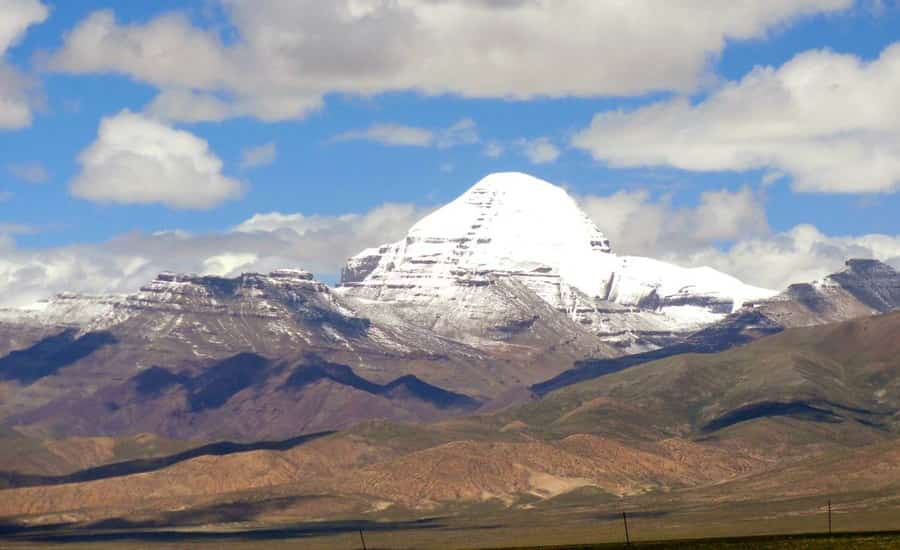Last Updated on 19/03/2024
Undertaking a pilgrimage to Kailash Mansarovar is a journey of spiritual significance and profound personal transformation. This guide aims to provide comprehensive insights and practical advice for those intending to embark on this sacred expedition, covering its historical and religious significance, preparation and planning tips, logistical considerations, challenges encountered along the way, and the rewards of this spiritual odyssey.
Significance:
- Holy pilgrimage for Hindus, Buddhists, Jains, and Bon practitioners.
- Mount Kailash: Abode of Lord Shiva, symbol of spiritual enlightenment.
- Lake Mansarovar: Purifies sins, grants spiritual purification.
Highlights:
- Mythological significance of Mount Kailash.
- Sacred ritual of circumambulating Lake Mansarovar.
- Challenging Kailash Kora trek.
- Exploration of ancient temples.
Challenges
- High altitudes, rugged terrain.
- Harsh weather conditions.
- Physical endurance required.
Best Time to Visit
Weather Conditions
- Daytime: 0°C to 33°C.
- Nighttime: Below freezing.

Significance of Kailash Mansarovar Yatra
The Kailash Mansarovar Yatra holds an unparalleled significance in Hinduism, Buddhism, Jainism, and Bon religions, revered as the abode of divine energy and spiritual enlightenment. Mount Kailash, towering majestically in the heart of the Himalayas, is considered the throne of Lord Shiva, the ultimate ascetic and source of creation and destruction. Lake Mansarovar, nestled at the base of Mount Kailash, is believed to cleanse the soul of sins and grant spiritual purification. Undertaking this pilgrimage is not merely a physical journey but a profound quest for inner transformation and divine blessings.
Highlights of Mansarovar Yatra
- Mythological Significance: Mount Kailash stands as a symbol of cosmic energy and spiritual power, attracting pilgrims from far and wide to pay homage to the divine presence of Lord Shiva.
- Visit to Lake Mansarovar: The pristine waters of Lake Mansarovar, reflecting the towering peaks of the Himalayas, evoke a sense of serenity and awe, inviting pilgrims to immerse themselves in its purifying embrace.
- Sacred Walk of Kailash: Embarking on the circumambulation (kora) of Mount Kailash is a journey of self-discovery and spiritual renewal, where every step taken is a testament to one’s devotion and resilience.
- Exploring Mystical Temples: Discovering the ancient monasteries and temples that adorn the landscape around Mount Kailash is a glimpse into the rich tapestry of religious and cultural heritage that permeates the region.
- Touching the Divine: The ritual of “Charan Sparsh,” wherein devotees touch the feet of Mount Kailash, is a moment of profound reverence and humility, believed to bestow divine blessings and spiritual grace.
- Inner Kora – Nandi Parikrama: Venturing into the inner sanctum of Mount Kailash is a test of endurance and faith, offering seekers a closer communion with the divine energies that permeate the sacred mountain.
- Rakshas Tal – The Poison Lake: Exploring the enigmatic Rakshas Tal, shrouded in myth and legend, is an encounter with the darker forces of nature, reminding pilgrims of the eternal struggle between good and evil.
How difficult is Kailash Mansarovar Yatra
The Kailash Mansarovar Yatra is not merely a physical journey but a test of one’s endurance, faith, and resilience. Trekking at high altitudes, with elevations exceeding 5,000 meters, poses significant challenges, including altitude sickness, extreme weather conditions, and rugged terrain. However, with proper preparation, including physical fitness training, acclimatization, and mental preparedness, pilgrims can overcome these obstacles and experience the spiritual rewards that await them.
Best Time for Kailash Mansarovar Yatra
Choosing the right time to undertake the Kailash Mansarovar Yatra is crucial for a safe and rewarding pilgrimage. The optimal time is from May to October, when the weather is relatively mild, with clear skies and comfortable temperatures. However, pilgrims should avoid the monsoon season (July to September) and the harsh winter months (November to April), which present significant challenges for travel and trekking.
Weather Condition
The weather conditions around Mount Kailash can be unpredictable and harsh, with rapid changes in temperature and occasional snowfall. While daytime temperatures may range from 0°C to 33°C, nighttime temperatures can plummet below freezing, especially at higher altitudes. Pilgrims should be prepared for varying weather conditions by packing appropriate clothing, including layers for insulation, waterproof outerwear, and sturdy footwear.
What to Pack for Kailash Yatra
Packing for the Kailash Mansarovar Yatra requires careful consideration of essential items to ensure comfort, safety, and readiness for the journey ahead. Pilgrims should pack:
- Layered clothing for varying temperatures and weather conditions
- Sturdy hiking boots with ankle support for trekking on rugged terrain
- Waterproof outerwear, including jackets, pants, and ponchos
- Sun protection, such as sunscreen, sunglasses, and hats, to shield against intense UV rays at high altitudes
- High-calorie snacks and energy bars to replenish energy during long treks
- Basic first aid kit with essential medications for altitude sickness, minor injuries, and common ailments
- Personal hygiene items, including toiletries, wet wipes, and hand sanitizer, for maintaining cleanliness and hygiene during the journey
- Portable water purification system or water purification tablets for safe drinking water on the go
Travel Permit and Visa for Kailash Tour
Travelers embarking on the Kailash Mansarovar Yatra require valid permits and visas to enter Tibet and the surrounding regions. This includes obtaining a China Group Visa and Tibet Travel Permit through authorized travel agencies. The application process typically takes several days, so pilgrims should plan ahead and complete all necessary paperwork well in advance of their departure date.
How to Hire a Horse
For pilgrims seeking assistance during the Kailash Kora, hiring horses and local guides is a common practice. Travelers can arrange for horse hire through their tour operators or local guides in Darchen, the starting point of the pilgrimage. However, it is essential to communicate one’s requirements and preferences to ensure a comfortable and safe trekking experience. Pilgrims should also be mindful of the additional costs associated with hiring horses and budget accordingly.
FAQs and More
- Is a valid passport required for Kailash Mansarovar Yatra?
Yes, a valid passport is required for travel to Kailash Mansarovar, along with other necessary permits and visas.
- Can travelers take a bath in Lake Mansarovar?
While direct bathing in Lake Mansarovar is not permitted, pilgrims can collect holy water from the lake for ceremonial purposes.
- Is it possible to touch Mount Kailash during the yatra?
Yes, pilgrims can participate in the sacred ritual of “Charan Sparsh,” wherein they touch the feet of Mount Kailash as a gesture of reverence and devotion.
- What is the significance of Mount Kailash in Hindu mythology?
Mount Kailash is believed to be the abode of Lord Shiva and Goddess Parvati in Hindu mythology, symbolizing spiritual liberation and divine grace.
- How much does a Kailash Mansarovar Yatra package cost for 2024?
The cost of a Kailash Mansarovar Yatra package varies depending on factors such as travel route, duration, accommodations, and inclusions. Pilgrims should consult with authorized tour operators for accurate pricing and package details.
- What are the accommodation options during the yatra?
Accommodation options during the Kailash Mansarovar Yatra range from basic guesthouses and tented camps to more comfortable lodges and hotels, depending on the chosen itinerary and travel preferences.
- Are there any dietary restrictions or considerations during the pilgrimage?
While vegetarian meals are typically provided during the yatra, pilgrims with specific dietary requirements or restrictions should inform their tour operators in advance to ensure suitable arrangements.
- What are the emergency protocols in case of altitude sickness or other medical issues?
Pilgrims should familiarize themselves with emergency procedures and medical facilities along the pilgrimage route, including evacuation options and contact information for local authorities and medical professionals.
- Is it safe for solo travelers to undertake the yatra?:
While solo travel is possible, pilgrims are encouraged to join organized group tours or travel with companions for safety, support, and guidance during the journey.
In conclusion, embarking on a Kailash Mansarovar Religious Yatra is not merely a physical journey but a spiritual odyssey of self-discovery, devotion, and reverence. Pilgrims who undertake this sacred pilgrimage are rewarded with profound experiences, divine blessings, and a deeper understanding of the eternal quest for enlightenment and inner peace. By following the guidance provided in this comprehensive guide and embracing the challenges and blessings of the journey, pilgrims can embark on a transformative pilgrimage to one of the holiest sites in the world, Mount Kailash.
Also Read:


 Call
Call WhatsApp
WhatsApp Enquiry
Enquiry